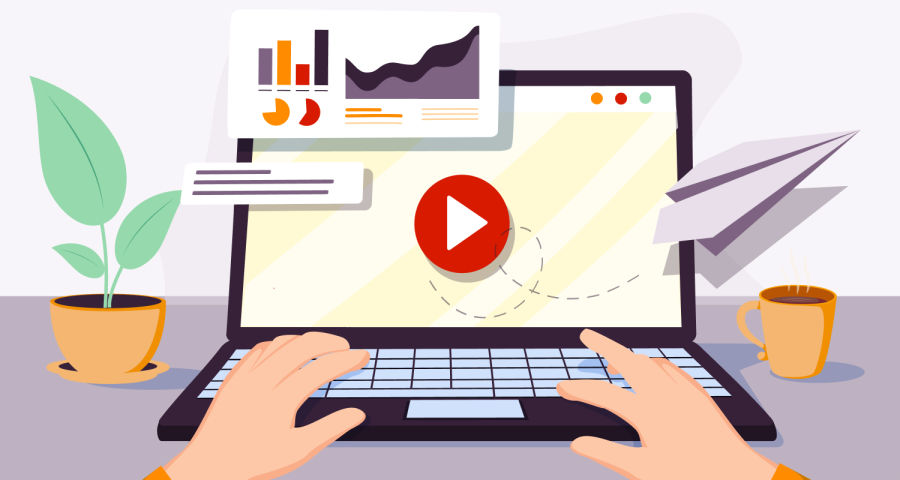//
Feb 10, 2025
Mastering Inbound Lead Generation: Qualify & Convert Ideal Leads
What is Inbound Lead Generation?
Inbound lead generation is a strategic marketing approach that attracts potential customers through valuable content and meaningful engagement. Instead of using aggressive sales tactics, businesses provide informative and helpful resources—such as blog posts, videos, and guides—to nurture prospects throughout their buying journey.
The ultimate goal? Building trust, fostering relationships, and converting leads into loyal customers.
Why Inbound Lead Generation Matters
While social media and influencer marketing increase brand awareness, true value lies in acquiring leads that are genuinely interested in your products or services. These leads are more likely to convert, making inbound marketing an essential strategy for long-term business growth.
Key Terms You Need to Know
Familiarize yourself with these essential inbound marketing concepts:
Warm & Cold Leads: Warm leads have engaged with your brand, while cold leads have not.
Pain Points: Challenges that potential customers seek to address.
ICPs & Buyer Personas: Profiles representing your ideal customers based on behavior and demographics.
Lead Scoring & Segmentation: Ranking leads by engagement and grouping them for targeted marketing.
CRM (Customer Relationship Management): Software that organizes and tracks customer interactions.
Sales Funnel & Buyer's Journey: The path from awareness to conversion.
Lead Nurturing: Building relationships with potential customers through relevant content.
Identifying Your Ideal Audience: ICPs & Buyer Personas
Before launching any marketing campaign, you need to define your target audience. This process involves creating Ideal Customer Profiles (ICPs) and Buyer Personas to tailor your messaging effectively.
How to Build an Ideal Customer Profile (ICP)
Your ICP should include:
- Industry and company size
- Job titles of key decision-makers
- Pain points and challenges
- Common goals and motivations
How to Develop Buyer Personas
Buyer personas bring your ideal customers to life. They are detailed character representations based on:
Demographics (age, location, income level)
Interests and behaviors
Preferred communication channels
By gathering insights from sales, customer service, and marketing teams, you can refine these profiles for highly targeted campaigns that speak directly to your audience.
Leveraging Lead Scoring and Segmentation for Higher Conversions
What is Lead Scoring?
Lead scoring assigns a numerical value to each lead based on their level of engagement. This system helps businesses prioritize high-value prospects.
Key Benefits of Lead Scoring:
Identifies high-intent leads: Focus on prospects most likely to convert.
Streamlines sales efforts: Sales teams can dedicate resources to the most promising leads.
Enhances lead nurturing: Lower-scoring leads can be nurtured until they’re ready to take action.
What is Lead Segmentation?
Lead segmentation categorizes leads into groups based on shared characteristics, allowing for highly personalized marketing efforts:
Personalized Communication: Send targeted messages that resonate with each audience segment.
Addressing Pain Points: Deliver relevant solutions to specific customer challenges.
Improved Conversion Rates: Engage leads at the right stage of their journey with tailored content.
Pro Tip: Combining lead scoring and segmentation helps businesses focus on high-value leads while nurturing those still in the decision-making phase.
The Role of CRM in Lead Management
A CRM system is essential for organizing and managing customer data, enabling seamless lead qualification, scoring, and segmentation. Popular CRM platforms include HubSpot, Salesforce, and SharpSpring.
How CRM Enhances Lead Generation
Centralized Lead Data: Access all customer interactions in one place.
Automated Lead Scoring: Rank leads based on engagement levels.
Segmentation for Personalization: Group leads by behavior and interests.
Prioritized Outreach: Sales teams can focus on leads most likely to convert.
Real-Time Analytics: Track lead interactions, conversions, and campaign performance.
Team Collaboration: Streamline communication between sales, marketing, and customer service.
Timing is Everything: When to Reach Out to Leads
One of the biggest challenges in inbound marketing is knowing when to contact leads. Too soon, and you risk overwhelming them. Too late, and they may have moved on.
How to Identify the Right Time to Connect
Monitor Lead Behavior: Track website visits, email engagement, and content downloads.
Use Lead Scoring: Engage high-scoring leads first.
Align with the Buyer’s Journey: Adjust your outreach based on where the lead is in the sales funnel.
The Inbound Marketing Flywheel
Unlike the traditional sales funnel, the inbound marketing flywheel keeps customers at the center of your strategy. By using a CRM and lead qualification process, businesses can maintain momentum and ensure continuous engagement.
Conclusion: Supercharge Your Inbound Lead Strategy
Inbound lead generation isn’t just about attracting leads—it’s about converting them into customers through smart segmentation, personalized nurturing, and well-timed outreach.
By leveraging CRM technology, lead scoring, and segmentation, businesses can optimize their sales processes, improve efficiency, and ultimately drive higher conversions.
Are you ready to take your inbound lead generation to the next level? Get in touch with the Watermark team today!







